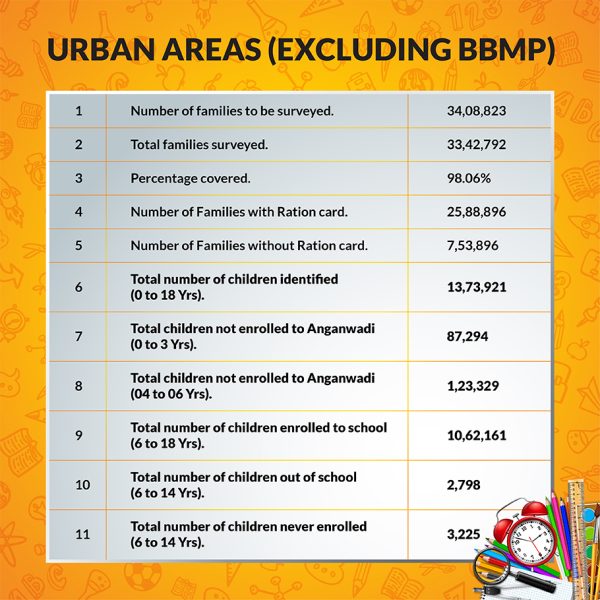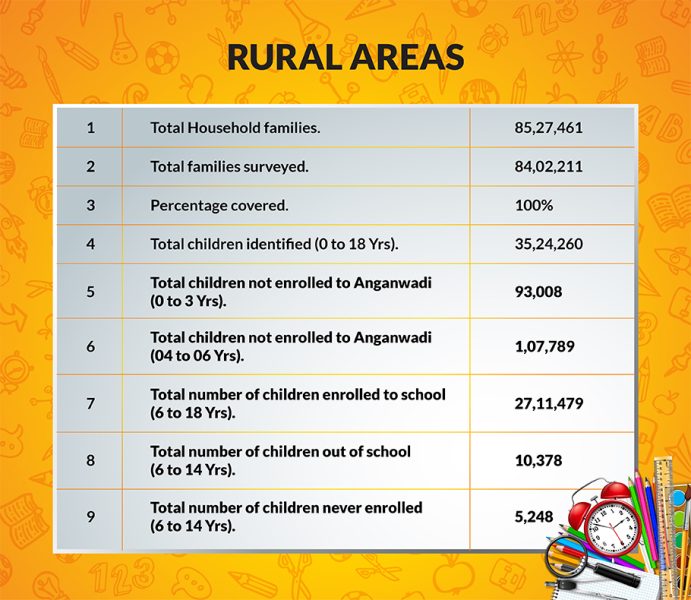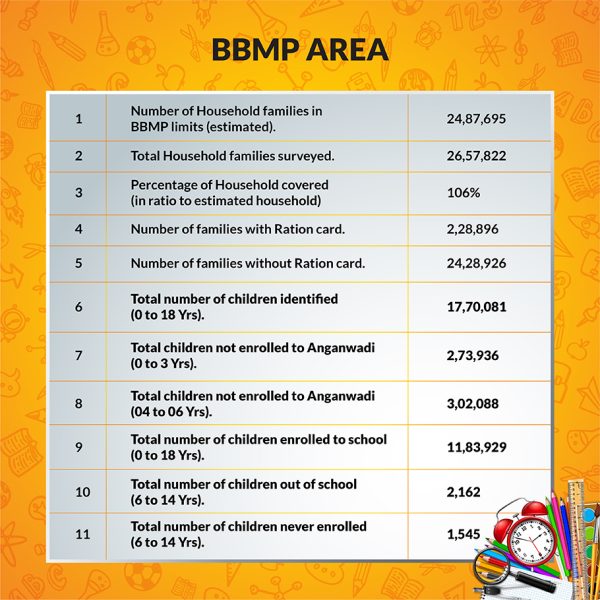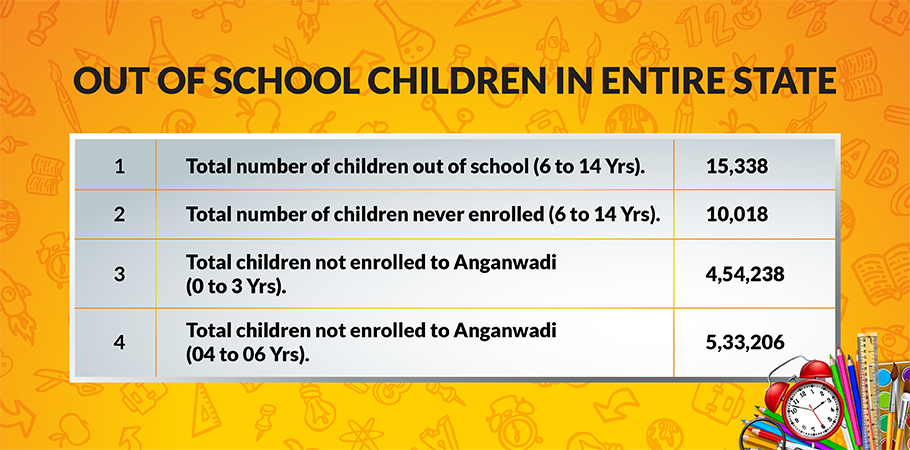
Over 10 lakh children in Karnataka deprived of education: Report

Call it the COVID effect or insufficient efforts on part of Karnataka state to promote education, the fact is more than 10 lakh children in the state, under the age of 14, are not getting formal education, according to a state-wide survey.
The state government submitted a detailed report of the survey to Karnataka High Court recently, showing that a total of 10,12,800 children are not in schools or anganwadis at present.

The state-wide survey throws startling numbers, mostly coming from urban areas. For instance, around 15,338 students in the 6 to 14 age group are not going to school. About 4.54 lakh children (approximately 3 years old) and 5.33 lakh (4 to 6 years old) are not registered with anganwadis (see graphic for more details).

Earlier, the High Court had registered a suo motu public interest litigation (PIL) and ordered the Department of Samagra Shikshana Karnataka (SSK) to survey rural, city and Bruhat Bengaluru Mahanagara Palike (BBMP) areas to know the state of education in the 3-14 years age category. Amicus curiae appointed by the High Court, KN Phaneendra, submitted the report to the divisional bench of Justice Alok Aradhe and Justice JM Khazi on July 6.
As per the survey, the state of education in the 3-14 years category is the worst in Bengaluru BBMP areas) when compared to rural or other city areas (see box).

The Urban Development Department told the court that “the survey is 100% complete”. The court was told that the column — “Number of Families to be Surveyed” – is with regards to Urban Local Bodies (cities) and hence there could be a difference/gap in the figure of “Number of Families to be Surveyed” and “Number of Families Surveyed”. This gap is mainly because there would be no families living in commercial properties, vacant sites etc, the Urban Development Department told the High Court.

The amicus curiae submitted to the court that the government has to take necessary action to bring students back to schools and admit out-of-school students as well. According to the report, farmer labourers keep moving from one place to another in search of livelihood and this is the main reason for increase in the number of out-of-school children.


